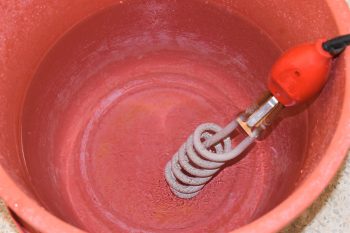
Drafts from air conditioners can make your home feel chilly, uncomfortable, and can lead to increased energy bills. However, there are several strategies to combat this issue, from sealing gaps around the air conditioner to using weatherstripping or adhesive-backed foam. This article will guide you through the steps to stop drafts from your air conditioner and improve the comfort and energy efficiency of your home.
To stop drafts from your air conditioner, start by identifying the source of the drafts, which could be due to insufficient insulation, air leaks, or weak HVAC airflow. DIY methods to stop drafts include replacing worn weather stripping, using weatherproof caulk to seal cracks, and using foam insulation. Regular maintenance of your air conditioner and seeking professional services can also help reduce drafts. Lastly, preventive measures during installation such as proper insulation and sealing can prevent drafts.
Common Causes of Air Conditioner Drafts
Before we delve into the solutions, it’s important to understand the common causes of drafts from air conditioners. These include insufficient insulation, air leaks, uninsulated spots, weak HVAC airflow, and even drafts from household fans and vents. In addition, cold air can enter your home through loose or ill-fitting outlets and switch plates.
Identifying Drafts from Air Conditioners
To identify if your air conditioner is causing drafts, look for signs such as cold spots or temperature fluctuations in your home, weak airflow from vents, pressure imbalances, and unusually hot or cold rooms. You can also place your hand near the vents, outlets, or other potential openings to feel for cold air.
How Drafts Increase Energy Bills
Drafts from air conditioners can lead to increased energy bills. According to Energy Star, homeowners can save up to 20% on heating and cooling costs, or up to 10% on their total annual energy bill, by sealing and insulating.
Impact of Drafts on Indoor Air Quality
Drafts can negatively impact the indoor air quality by introducing outdoor air pollutants, affecting the HVAC system’s performance, causing discomfort and health issues, and contributing to “sick building syndrome.”
DIY Methods to Stop Drafts
There are several DIY methods to stop drafts from air conditioners, such as replacing worn weather stripping, using weatherproof caulk to seal cracks, adjusting door thresholds, using foam insulation, installing a window insulation kit, creating a draft guard, and using an air conditioner cover.
Tools and Materials Needed to Stop Drafts
To stop drafts from air conditioners, you’ll need tools and materials like air conditioner weatherstrip, AC draft shield, foam air conditioner seal strip, Frost King air conditioner accessories, vent covers, caulk and weatherstripping, and air conditioner covers.
Regular Maintenance to Prevent Drafts
Regular maintenance is crucial to prevent drafts and maintain the efficiency of your air conditioner. It’s recommended to clean or replace the filters every month or two during cooler months and more frequently during warmer seasons.
Professional Services to Reduce Drafts
Professional services can help reduce drafts from air conditioners by conducting a professional home energy assessment, performing whole-home air sealing, adding insulation, sealing and insulating ducts, repairing or removing any parts of the home with internal moisture or mold, and improving the efficiency of heating, cooling, and hot water equipment.
Preventive Measures During Installation
To prevent drafts while installing an air conditioner, ensure proper insulation and sealing, install weatherstripping, use foam sealant tape, install a draft shield, position the thermostat correctly, use air conditioner weather seals, and cover window units when not in use.
Fixing Air Conditioner Drafts
To fix drafts from air conditioners, inspect the window or wall air conditioner for gaps and cracks, seal gaps and cracks, insulate the air conditioner, cover vents and returns, check for drafts around outlets, baseboards, attic hatches, vents, and fans, and weatherproof windows and doors.
By following these steps, you can effectively stop drafts from air conditioners, improve the comfort and energy efficiency of your home, and save money on energy bills.
Frequently Asked Questions
What type of weatherstripping is best for air conditioners?
The best type of weatherstripping for air conditioners is adhesive-backed foam tape. This material is durable, flexible, and can easily conform to the shape of your air conditioner, providing a tight seal against drafts.
How can I check for drafts around my air conditioner?
One simple way to check for drafts is to hold a lit incense stick near the air conditioner. If the smoke from the incense stick is disturbed, it’s a sign that a draft is present.
How often should I replace the filters in my air conditioner?
It’s recommended to replace your air conditioner filters every month or two during the cooler months and more frequently during warmer seasons. However, the frequency may vary based on the manufacturer’s recommendations and the air quality in your home.
What is a home energy assessment?
A home energy assessment, also known as an energy audit, is a professional evaluation of your home’s energy use. The assessment can identify areas where your home is losing energy, which can include drafts from your air conditioner.
Can I use a plastic cover to stop drafts from my window air conditioner?
Yes, plastic covers can be used to stop drafts from window air conditioners when they are not in use. These covers can help to seal the unit and prevent cold air from entering your home. However, ensure the unit is off before covering it.











